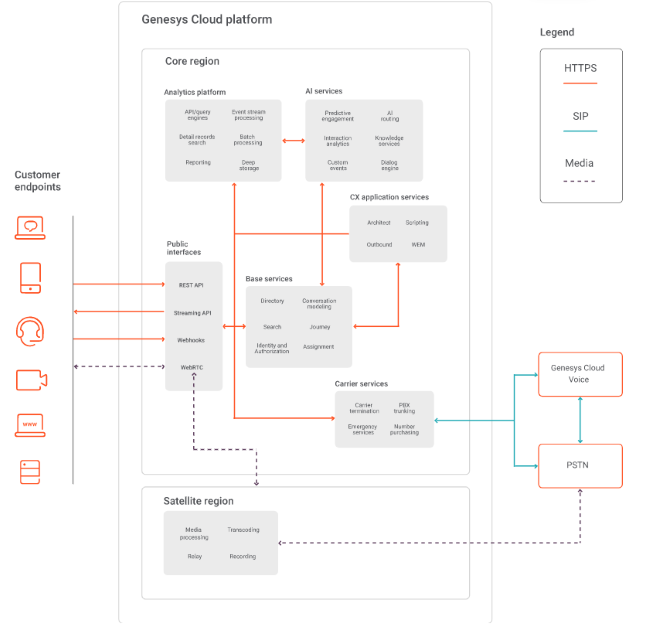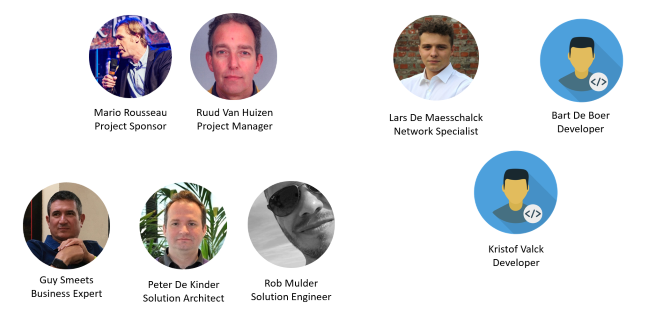AXA Bank - Genesys Contact CenterJanuari 2021 till December 2021Content: |
 |
Management Summary
In order to secure a proper working of the contact center of AXA towards the future, the old solution for the contact center needed to be revisited. While the business processes of the contact center would remain the same, the old solution did not offer a way to deal with the new realities of customer channels (such as chatbots, Whatsapp integration,…). To make the platform extensible, a shift was made to acquire a SaaS solution (Genesys Cloud CX) to handle the core tasks of the telephony center, and to custom develop integrations between the SaaS solution and the related business processes (such as case and knowledge management). My tasks were to design the flows between the acquired SaaS solution and the downstream services and applications, as well as perform the quality assurance of the deliverables by the different team members.
Team Composition
The collaboration between Ordina and AXA is based on Ordina’s CoSourcing-As-A-Service model where Ordina assists in the resource needs of AXA to find the right person for the jobs that AXA needs doing. This works on the axes of Management, Continuity and Agility, each comprised of a number of focus areas. These axes and focus areas form the platform on which the collaboration between the two organizations is formed. It enriches the simple placement of Ordina consultants at AXA with a community aimed to a more efficient collaboration, and a facilitation of improvement scenarios that can be suggested by Ordina to the benefit of AXA.

Standard Architecture for a Genesys SaaS implementation
The team consisted of the following people:

Lessons Learned
The infrastructure components and protocols used in the telephony world are very different from other integration projects. While there are still the exchanges of information over web services and queues from and towards backend services, the telephony signal itself is routed through and by components such as:
- Session Board Controller (SBC): A special-purpose device that protects and regulates IP communications flows. As the name implies, session border controllers are deployed at net-work borders to control IP communications sessions. Originally conceived to protect and control VoIP networks, SBCs are now used to regulate all forms of real-time communications including VoIP, IP video, text chat and collaboration sessions.
- SIP Trunk server: One of the main differences between Session Initiation Protocol (SIP) and Voice-over-IP (VoIP) is that SIP supports multimedia. VoIP can only send and re-ceive voice messages, whereas SIP can also send and receive images and videos. SIP serv-ers can transfer most of the processing side of things to an individual user’s system rather than a central VoIP server. As a result of its decentralized nature, SIP can handle large amounts of data traffic without a performance impact.
- IVR flows: Interactive Voice Center (IVR) is an automated interactive voice response sys-tem that interacts with the caller. The caller listens to the IVR system menu, responds by pressing a key on his or her phone, and the system reacts accordingly. Based on the caller’s answers, the IVR either provides him or her with the required information (e.g. account bal-ance, order status, etc.) or routes the call to the correct agent.

| Project | EA | SOA | BPM | Financial Sector |

